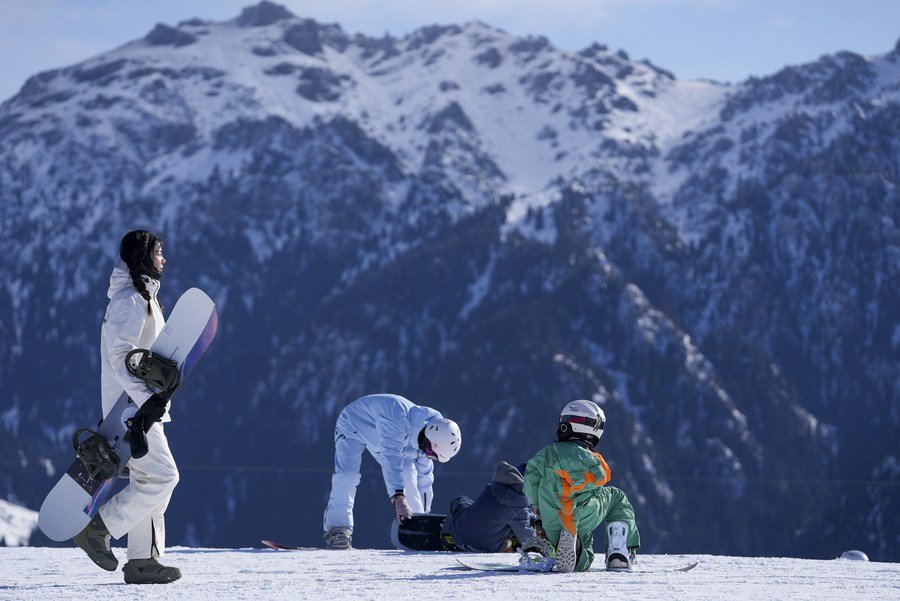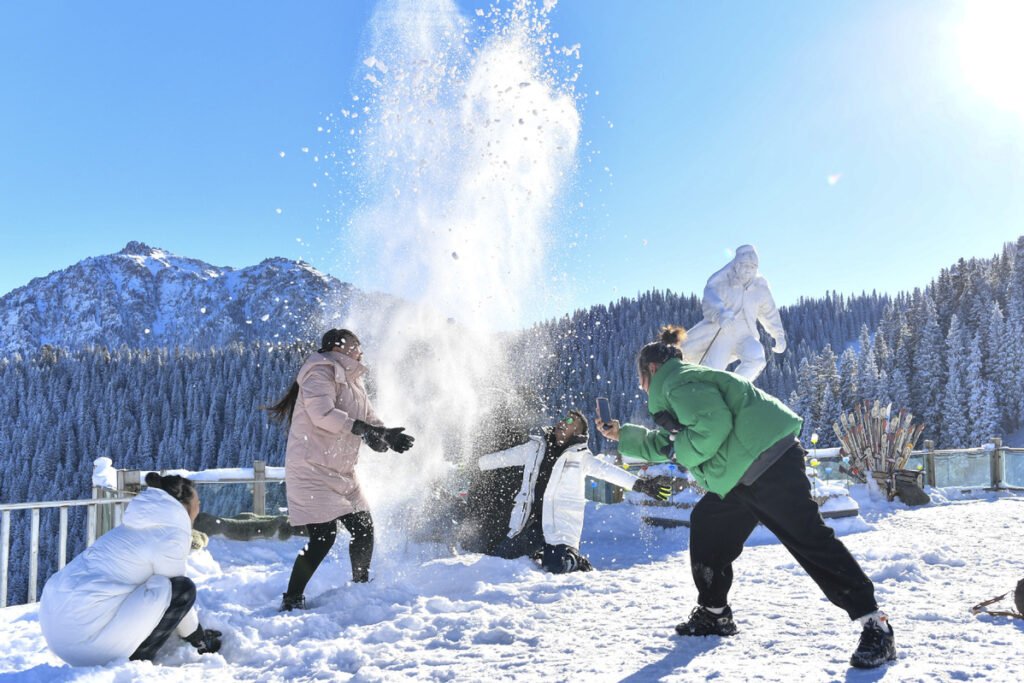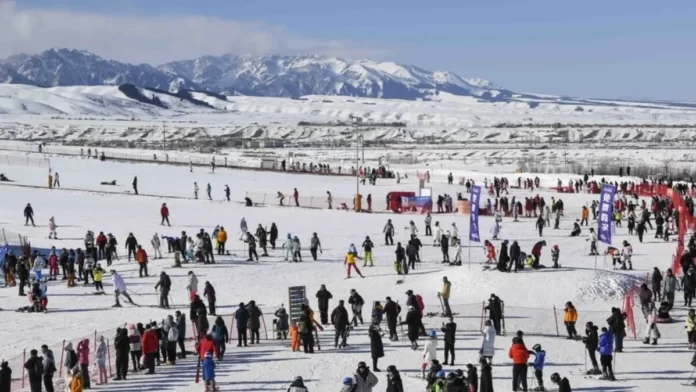China is experiencing a winter tourism boom as domestic travel makes a strong comeback, with popular destinations embracing the chill to offer unique experiences for eager travelers. This surge in winter tourism signifies a robust recovery for the industry, with Chinese destinations capitalizing on the renewed enthusiasm for exploration closer to home.
The frosty landscapes and winter wonderlands of China have become magnets for both local and international tourists, seeking memorable experiences amidst the snow-covered scenery. From Harbin’s renowned Ice Festival to the snow-capped peaks of Zhangjiajie, winter tourism is flourishing as destinations transform into enchanting paradises.
Harbin, known as the ‘Ice City,’ is at the forefront of China’s winter tourism resurgence. The annual Harbin International Ice and Snow Festival, featuring intricate ice sculptures and vibrant light displays, draws millions of visitors. This year, the festival is expected to break records, reflecting the pent-up demand for travel experiences after prolonged periods of restrictions.
Beyond Harbin, China’s winter tourism success extends to popular mountain resorts like Zhangjiajie and Yabuli. These destinations offer a mix of winter sports, breathtaking landscapes, and cultural experiences. Ski resorts are witnessing a surge in popularity, with enthusiasts and novices alike eager to hit the slopes and enjoy the crisp mountain air.
More About Winter Tourism
The revival of winter tourism is not only about snow and ice festivals. China’s ancient cities, adorned in a winter cloak, are drawing history enthusiasts seeking a unique perspective on traditional landmarks. The Great Wall, adorned with a dusting of snow, becomes a picturesque canvas, inviting tourists to explore its grandeur in a different light.

The flourishing winter tourism industry aligns with the Chinese government’s push for domestic consumption and the revitalization of the travel sector. The ‘Dual Circulation’ strategy, emphasizing domestic economic growth, has propelled the resurgence of domestic tourism, with winter becoming a key season for travelers to explore the diverse offerings within the country.
The success of winter tourism is also attributed to the proactive measures taken by local authorities to ensure the safety of travelers amid ongoing health concerns. Stringent health protocols and enhanced safety measures have instilled confidence in tourists, encouraging them to embark on winter adventures with a sense of security.
In addition to traditional winter destinations, emerging hotspots are gaining popularity, contributing to the diversification of winter tourism experiences in China. From the snow-covered landscapes of Jiuzhaigou Valley to the tranquil charm of Lijiang’s ancient town, travelers are exploring new corners of the country during the winter months.

The rebound of domestic travel is not only a testament to the resilience of the Chinese tourism industry but also a reflection of changing preferences among travelers. The allure of winter experiences, coupled with a desire for local exploration, has transformed the winter months into a peak travel season within the country.
As China embraces winter tourism with open arms, the positive impact extends beyond the tourism sector. Local businesses, hospitality services, and cultural attractions all stand to benefit from the surge in travel, injecting vitality into regional economies that have faced challenges during the pandemic.
Economic Impacts and Opportunities:
The surge in winter tourism is not only a delight for travelers but also a much-needed boost for the Chinese economy. The influx of visitors creates a ripple effect across various sectors, generating income for local businesses, hotels, restaurants, and transportation services. This economic injection becomes particularly significant as regions recover from the economic challenges posed by the pandemic. The winter tourism boom presents an opportunity for entrepreneurs to showcase their offerings and contribute to the overall economic recovery.
Sustainability in Winter Tourism:
As winter tourism gains momentum, there is a growing emphasis on sustainability and responsible travel practices. Local authorities and businesses are increasingly aware of the ecological impact of tourism on fragile winter ecosystems. Efforts to minimize the carbon footprint, conserve natural resources, and promote eco-friendly initiatives are becoming integral to the winter tourism landscape. The integration of sustainable practices ensures that the beauty of winter destinations endures for future generations.
Cultural Experiences and Festivals:
Winter tourism in China goes beyond the scenic landscapes and outdoor activities; it encompasses a rich tapestry of cultural experiences and festivals. Traditional winter celebrations, such as the Chinese New Year and Lantern Festival, add cultural depth to the travel experience. Local cuisines, performances, and customs become an integral part of winter tourism, offering visitors a chance to immerse themselves in the unique traditions of each destination.
Digital Transformation in Winter Travel:
The resurgence of winter tourism aligns with the ongoing digital transformation in the travel industry. Online platforms and mobile applications play a crucial role in providing travelers with real-time information, booking options, and personalized experiences. From virtual tours to augmented reality-enhanced attractions, technology is shaping the way tourists engage with and navigate winter destinations. The digital landscape offers convenience, enhances safety measures, and provides a seamless travel experience for winter enthusiasts.
Looking Ahead:
As winter tourism continues to thrive, the industry looks ahead with optimism. The success of domestic travel during the winter months serves as a model for other nations grappling with the challenges of a post-pandemic world. China’s approach to reviving winter tourism not only sparks inspiration for travelers within the country but also sets an example for global tourism recovery. The winter tourism boom is a testament to the resilience of the travel industry and its ability to adapt, innovate, and create memorable experiences even in the face of adversity.

